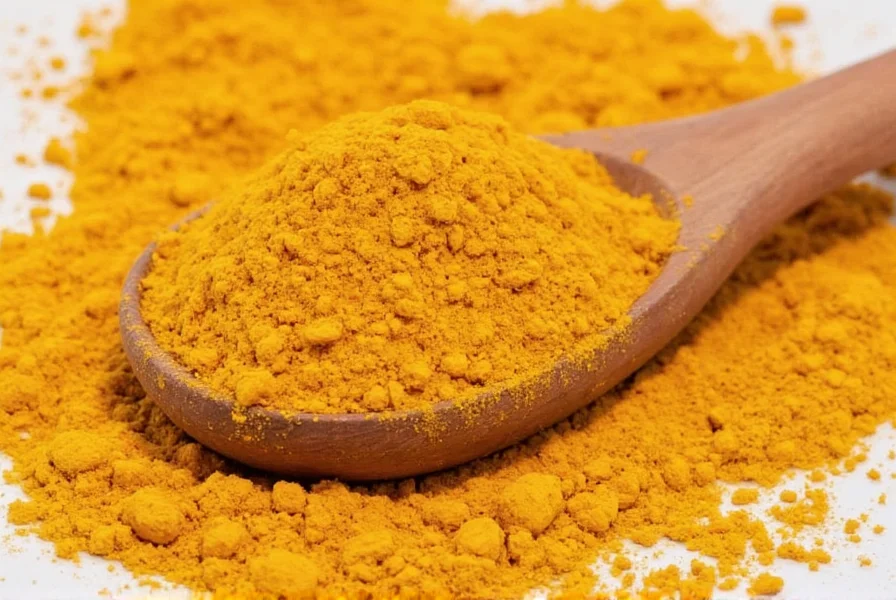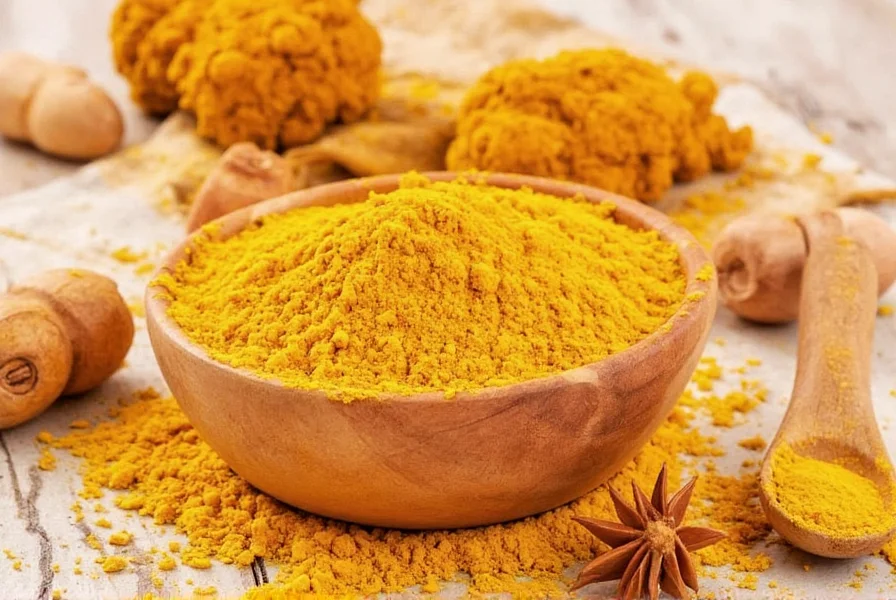The best substitutes for turmeric are curry powder (for flavor complexity), saffron (for vibrant color), ginger (for earthy notes), and paprika (for color without strong flavor). The ideal replacement depends on whether you need to replicate turmeric's golden hue, earthy flavor, or health properties in your specific recipe.
Running out of turmeric mid-recipe can disrupt your cooking flow, but several effective alternatives exist. Whether you're making curry, golden milk, or simply need color for rice, understanding which substitute works best for your specific need ensures your dish turns out perfectly. This guide explores practical turmeric replacements backed by culinary expertise, helping you make informed choices when turmeric isn't available.
Why You Might Need Turmeric Substitutes
Turmeric's unique combination of earthy flavor, vibrant yellow color, and potential health benefits makes it challenging to replace completely. However, cooks seek alternatives for various legitimate reasons:
- Unavailability in local stores
- Allergic reactions or sensitivities
- Desire for different flavor profiles
- Need for color without strong flavor
- Seeking similar health properties with different taste
Key Factors When Choosing a Turmeric Replacement
Before selecting a substitute, determine which aspect of turmeric you need to replicate:

Color vs. Flavor vs. Health Benefits
Turmeric serves multiple functions in cooking. The right substitute depends on your priority:
- Color replacement - When you need golden yellow hue without strong flavor
- Flavor replacement - When earthy, slightly bitter notes are essential
- Health properties - When seeking similar antioxidant or anti-inflammatory benefits
Top 7 Turmeric Substitutes Ranked by Effectiveness
1. Curry Powder (Best All-Around Substitute)
Curry powder typically contains turmeric as its primary ingredient along with complementary spices. This makes it an excellent substitute when you need both color and complex flavor.
Usage ratio: Replace 1 teaspoon turmeric with 1½-2 teaspoons curry powder
Best for: Curries, stews, and rice dishes where complex spice profiles work well. This is the best turmeric substitute for curry recipes specifically.
2. Saffron (Premium Color Replacement)
Saffron provides a similar golden color with a distinct floral aroma. While more expensive, a small amount delivers vibrant color.
Usage ratio: Steep 10-12 saffron threads in 2 tablespoons warm liquid to replace 1 teaspoon turmeric
Best for: Rice dishes, sauces, and desserts where color matters more than earthy flavor. Ideal when creating visually appealing dishes that require golden hue without turmeric's distinct taste.
3. Ginger (Flavor-Focused Alternative)
Fresh or ground ginger shares some earthy characteristics with turmeric but lacks the vibrant color. This substitute works well when flavor is your priority.
Usage ratio: Replace 1 teaspoon turmeric with ½ teaspoon ground ginger or 1 teaspoon fresh grated ginger
Best for: Golden milk alternatives, soups, and stir-fries where warm, earthy notes are desired. This is an excellent turmeric replacement for golden milk when you want similar health properties with different flavor.
4. Paprika (Mild Color Substitute)
Sweet paprika provides color without overwhelming flavor, making it versatile for various applications.
Usage ratio: Replace 1 teaspoon turmeric with ½-1 teaspoon paprika
Best for: When you need color without strong flavor interference. Works well in cheese sauces, mashed potatoes, and egg dishes. This is a practical non-spicy turmeric alternative for delicate dishes.
5. Mustard Powder (Color and Mild Flavor)
Mustard powder offers yellow color with a subtle tang that complements many savory dishes.
Usage ratio: Replace 1 teaspoon turmeric with ½ teaspoon mustard powder
Best for: Salad dressings, marinades, and cheese dishes where a slight tang enhances flavor.
6. Annatto (Natural Colorant)
Annatto seeds or paste provide vibrant color with minimal flavor impact, commonly used in Latin American cooking.
Usage ratio: Steep ½ teaspoon annatto seeds in oil or use ¼ teaspoon annatto powder to replace 1 teaspoon turmeric
Best for: Rice dishes and sauces where pure color matters most. This turmeric alternative for coloring food works exceptionally well without altering flavor profiles.
7. Cumin (Earthy Flavor Alternative)
Cumin shares some earthy characteristics but has a stronger, warmer flavor profile than turmeric.
Usage ratio: Replace 1 teaspoon turmeric with ½ teaspoon cumin
Best for: Hearty stews and meat dishes where robust flavors work well. Use cautiously as it significantly changes flavor profiles.
| Substitute | Ratio (vs 1 tsp turmeric) | Best For | Color Match | Flavor Match |
|---|---|---|---|---|
| Curry Powder | 1½-2 tsp | Curries, stews | ★★★★☆ | ★★★★☆ |
| Saffron | 10-12 threads | Rice, sauces | ★★★★★ | ★☆☆☆☆ |
| Ginger | ½ tsp ground | Golden milk, soups | ★☆☆☆☆ | ★★★☆☆ |
| Paprika | ½-1 tsp | Cheese sauces, eggs | ★★★☆☆ | ★☆☆☆☆ |
| Annatto | ¼ tsp powder | Rice, neutral dishes | ★★★★☆ | ★☆☆☆☆ |
Special Considerations for Specific Applications
For Golden Milk and Beverages
When making golden milk alternatives, ginger provides similar health properties with complementary flavor. Add a pinch of cinnamon to enhance the warming qualities. For color without flavor change, consider a small amount of saffron steeped in the milk.
For Curry Dishes
The best turmeric substitute for curry is curry powder itself, as it contains turmeric plus complementary spices. If unavailable, a combination of ginger, cumin, and coriander can approximate the flavor profile while paprika provides color.
For People with Turmeric Allergies
If avoiding turmeric due to allergies, focus on color substitutes like saffron or annatto that don't share botanical family characteristics. Ginger and curry powder may cause reactions in sensitive individuals as they're in related plant families.
Common Mistakes to Avoid
Many home cooks make these errors when substituting for turmeric:
- Using equal amounts of substitutes without adjusting for potency
- Expecting one substitute to replicate both color and flavor perfectly
- Adding substitutes too late in cooking, preventing flavor development
- Using strong substitutes like cumin in delicate dishes
Practical Tips for Successful Substitution
For best results when replacing turmeric:
- Start with less substitute than recommended, then adjust to taste
- Consider adding a pinch of black pepper to enhance absorption of any curcumin-containing substitutes
- For color-focused substitutions, add the substitute to cooking oil first to maximize color dispersion
- When making golden milk alternatives, blend substitutes with healthy fats for better nutrient absorption
Frequently Asked Questions
Can I use paprika instead of turmeric in equal amounts?
No, paprika is stronger in color but milder in flavor than turmeric. Use half the amount of paprika compared to turmeric to avoid overpowering your dish. For every teaspoon of turmeric, start with ½ teaspoon paprika and adjust as needed.
What's the best turmeric substitute for people with allergies?
For those with turmeric allergies, saffron or annatto provide similar color without botanical relation to turmeric. These turmeric alternatives for people with allergies won't trigger reactions while maintaining visual appeal in dishes.
How do I substitute for turmeric in golden milk?
For golden milk alternatives, use equal parts ginger and a pinch of cinnamon to replace turmeric. Add a small amount of saffron for color if desired. This turmeric replacement for golden milk maintains health benefits while creating a different but equally comforting beverage.
Does ginger work as a turmeric substitute in all recipes?
Ginger works well as a flavor substitute but not for color. It's excellent in soups, stews, and golden milk alternatives, but won't provide the golden hue in rice or sauces. The ginger vs turmeric substitution ratio is typically ½ teaspoon ground ginger for 1 teaspoon turmeric.
Can I make my own curry powder as a turmeric substitute?
Yes, combine 2 parts coriander, 1 part cumin, 1 part ginger, ½ part black pepper, and ½ part cinnamon to create a basic curry powder. This homemade blend serves as an effective turmeric substitute for curry recipes while allowing you to control ingredients and freshness.











 浙公网安备
33010002000092号
浙公网安备
33010002000092号 浙B2-20120091-4
浙B2-20120091-4